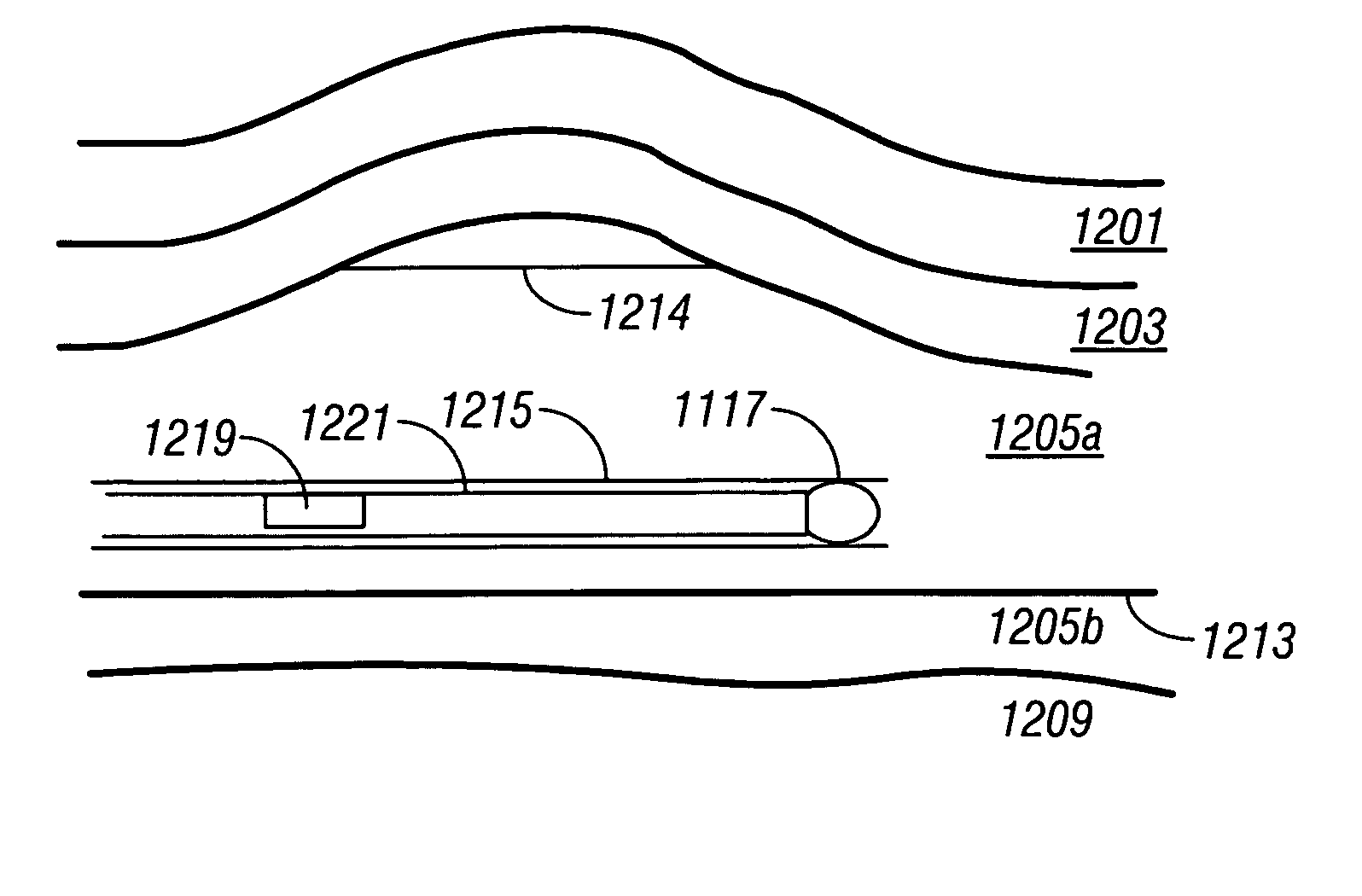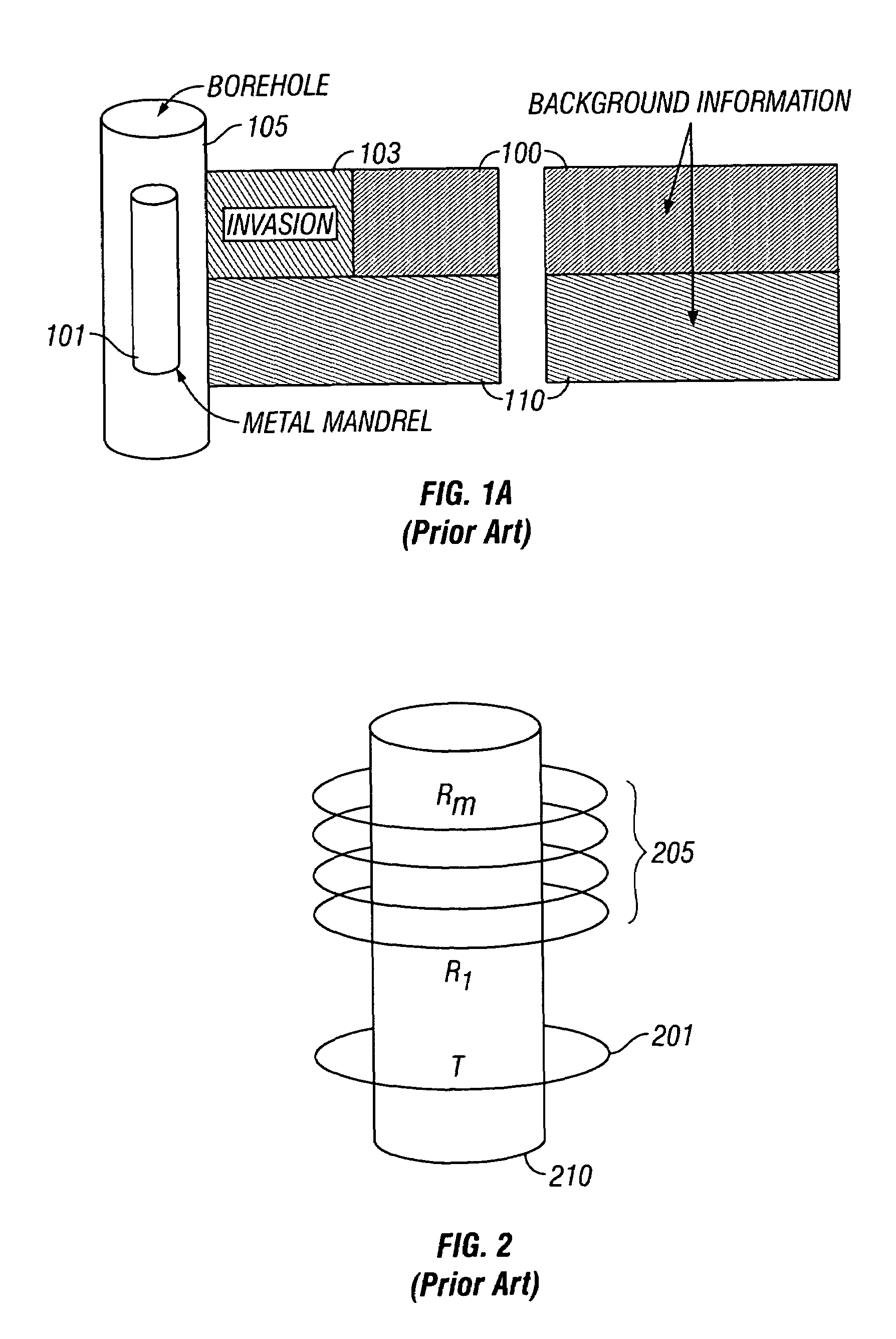Geosteering in anisotropic formations using multicomponent induction measurements
a multi-component induction and geosteering technology, applied in the field of electromagnetically inducible well logging, can solve the problems of inability to validate assumptions, not always the case, and resistivity sensors are responsiv
- Summary
- Abstract
- Description
- Claims
- Application Information
AI Technical Summary
Benefits of technology
Problems solved by technology
Method used
Image
Examples
first embodiment
[0097]FIG. 12 shows a flowchart of an exemplary embodiment of the present invention. MFFM is applied using the 3DEX™ measurement tool (Box 1401). The obtained measurements are the components of the matrix of the left hand side of Eq. (23). If the angles θ and φ are known, separation of modes is then performed (Box 1403). Fundamental modes are typically the principal components hxx and hxx of the diagonalized multifrequency matrix. One way to separate the modes is by performing a least squares operation, for example, on Eq. (25). Acquisition of at least 2 or more independent components enable a solution of Eq. (25), having 2 unknown on its right-hand side. Thus, a requirement is that the number ni of focused measurements must be at least, or must be capable of giving two independent measurements. In Box 1405, knowledge of hzz, relative dip θ, and relative azimuth φ enables determination of the horizontal conductivity, σh using the standard prior art inversion methods, such as that de...
second embodiment
[0098]FIG. 13 details an exemplary method of the invention for recovering formation dip and formation azimuth given the obtained MFFM components. Formation angles are determined simultaneously with the principal components. This is different from the method disclosed in Tabarovsky '045 where an iterative process is used for determination of formation angles. In Box 1501, the entire processing interval is subdivided into relatively small windows in which values of the relative formation dip and relative formation azimuth within the windows are substantially constant. The term “relative” refers to the formation dip and azimuth in a wellbore based coordinate system. We denote these angles by θ and Φ. As shown in Box 1503, a number of incremental values of relative formation dip are selected from a range, such as from zero to ninety degrees at every logging depth. At every given logging depth and formation dip, the relative formation azimuth is changed incrementally from 0 to 360 degree...
PUM
 Login to View More
Login to View More Abstract
Description
Claims
Application Information
 Login to View More
Login to View More - R&D
- Intellectual Property
- Life Sciences
- Materials
- Tech Scout
- Unparalleled Data Quality
- Higher Quality Content
- 60% Fewer Hallucinations
Browse by: Latest US Patents, China's latest patents, Technical Efficacy Thesaurus, Application Domain, Technology Topic, Popular Technical Reports.
© 2025 PatSnap. All rights reserved.Legal|Privacy policy|Modern Slavery Act Transparency Statement|Sitemap|About US| Contact US: help@patsnap.com



